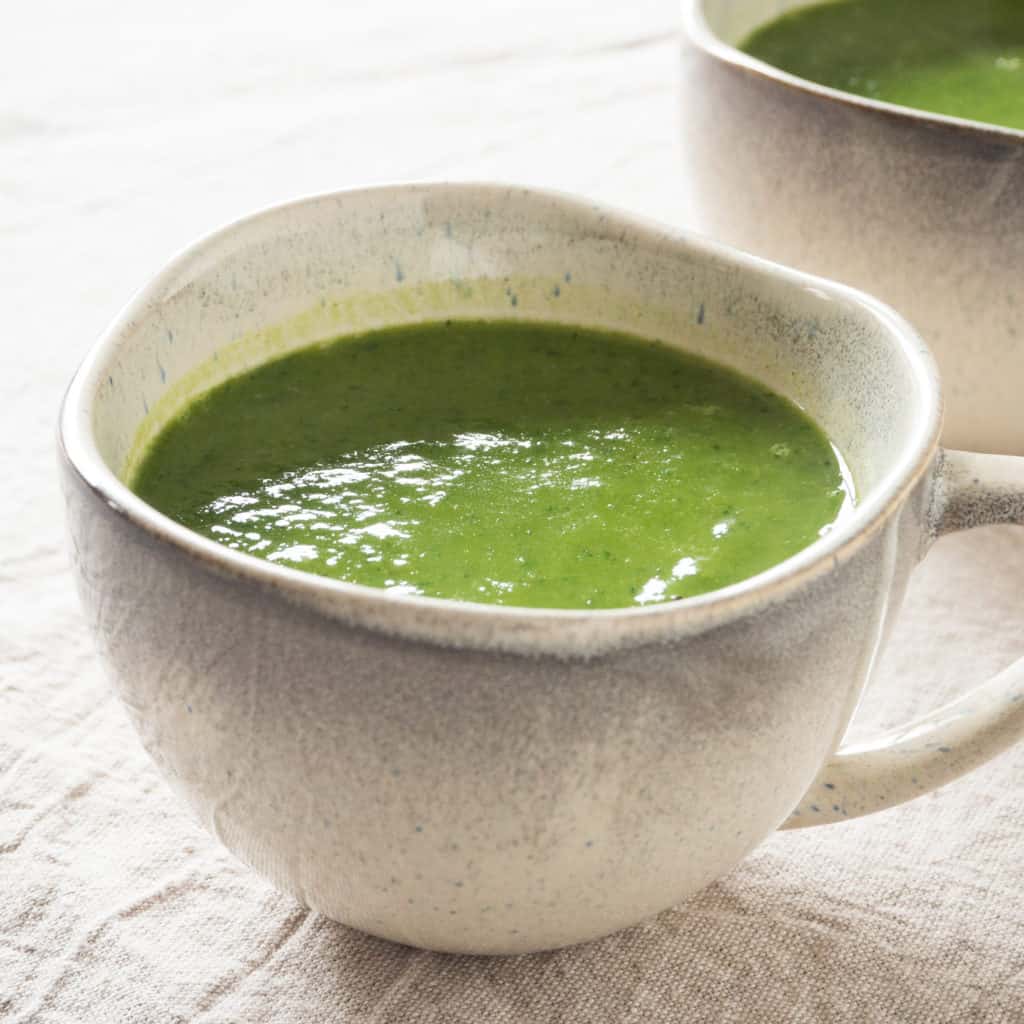
Lettuce and Pea Soup is summer in a bowl! It is so light and full of flavour you will want to eat it all summer. The slight bitterness of the lettuce works so well with the sweetness of the peas. This is a great summer soup that makes you realise how wonderful seasonal produce is. I prefer dill to the traditional use of mint with peas. Dill works well with the sweetness of the peas to bring them back down to earth.
Lettuce and Pea Soup very easy and quick to prepare. It takes only 20 minutes from starting the soup to bowls of steaming green gorgeousness on the table. Best eaten straight after cooking. Or chill very quickly to serve cold.
Find the full Lettuce and Pea Soup recipe here.
Perfect for lunch or light dinner and fancy enough for a dinner party starter. Serve with Gluten Free Vegan Rosemary and Sea Salt Crackers or as a starter to Courgette and Chard Tarts.
Preparation
Difficulty easy
Preparation time 5 minutes
Cooking time 15 minutes
Find the full Lettuce and Pea Soup recipe here.
Allergens
The soup is gluten-free and vegan as well as…
Coconut free
Garlic free
Lupin free
Mustard free
Nightshade free
Onion free
Peanut free
Sesame free
Soya free
Tree nut free.
About
Lettuce is thought of as an unusual ingredient in soups and other hot dishes. However it is a solid part of traditional French and Chinese cookery. Lettuce has such a huge variety of flavours and textures that it is surprising lettuce is not used more in hot or cooked food. Cos (or romaine) lettuce is robust and like a light spring cabbage and the much maligned iceberg lettuce remains cripsy whatever you do to it. Whereas roundhead lettuces are so delicate they would wilt at a whiff of hot water. There are a number of lettuces that lend themselves to soups and stir fries. Making the most of in-season lettuce is part of my summer plan.
Lettuce was first cultivated in ancient Egypt for the production of oil from its seeds. This plant was probably selectively bred by the Egyptians into a plant grown for its edible leaves, with evidence of its cultivation appearing as early as 2680 BC.
Lettuce appears in many medieval writings, especially as a medicinal herb. Hildegard of Bingen mentioned it in her writings on medicinal herbs between 1098 and 1179, and many early herbals also describe its uses. In 1586, Joachim Camerarius provided descriptions of the three basic modern lettuces – head lettuce, loose-leaf lettuce, and romaine (or cos) lettuce. Between the late 16th century and the early 18th century, many varieties were developed in Europe, particularly Holland.
Nutritional values of lettuce vary depending on the variety, but per 100 gram serving lettuce provides around 13 kilo calories and is an excellent source (20% of the RDA, or higher) of vitamin K (97% RDA) and vitamin A (21% RDA), with higher concentrations of the provitamin A compound, beta-carotene, found in darker green lettuces, such as Romaine. With the exception of the iceberg variety, lettuce is also a good source (10-19% RDA) of folate and iron.